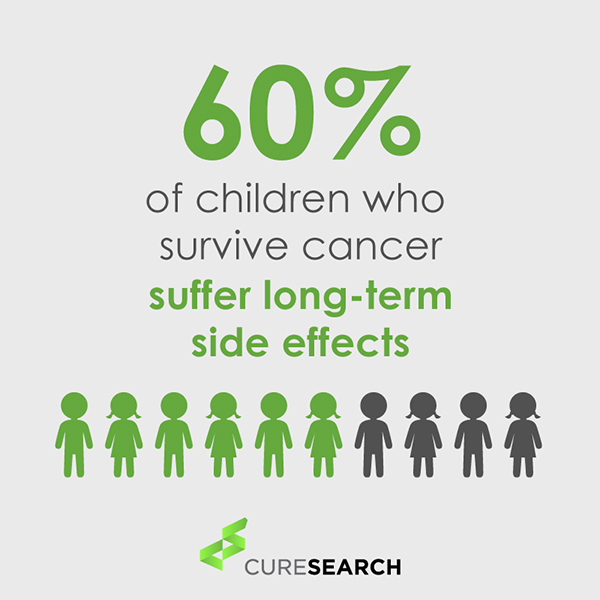
Just the thought of a child getting cancer can be frightening and overwhelming.
The causes of childhood cancer are largely unknown. It can occur suddenly, with no early symptoms, and might get detected during a physical exam.
The most common type of childhood cancer is leukemia, a cancer of the blood. Leukemia begins in the bone marrow, the spongy substance inside our bones where blood cells are made.
Other childhood cancers include lymphoma (blood cancer that begins in the lymph glands) and solid tumors (abnormal clumps of tissue). Solid tumors may occur throughout the body, such as in the brain, kidney, muscle or bone.
Spotting cancer in your child

“If you notice something unusual in your child—unexplained symptoms, not growing properly, belly distended, blood in urine—take your child to the doctor,” says Dr. Nita Seibel, a pediatric oncologist at NIH.
If the doctor suspects cancer, a series of tests will help identify the type of cancer, where it’s located and whether it has spread to other parts of the body.
Cancers in children can be different from adult cancers. When you’re researching the diagnosis, be sure you’re looking at how that cancer affects children. Often, the outcomes may be better for children than for adults with the same type of cancer.
Treatment

Doctors design treatment plans specific to each child. Children usually receive one or more of the following treatments: chemotherapy drugs; radiation; surgery (for solid tumors); immunotherapy; or a bone marrow or blood stem cell transplant. Unpleasant side effects are common and can include hair loss, nausea and diarrhea. But side effects tend to fade shortly after treatment ends.
Dr. Stephen Hunger, a pediatric cancer specialist at the University of Colorado, says that most advances in treatment have come from improvements to chemotherapy drugs. For instance, treatment for childhood leukemia 30 years ago often involved radiation to the brain. But radiation can cause health problems later in life.

Now, with improvements to chemotherapy, oncologists are using radiation less, if at all, for children with leukemia and some other types of cancer. “This is a good change because of the long-term side effects to thinking and learning, and the risk of later developing brain tumors,” Hunger says.
Taking your child through cancer

When a child is being treated for cancer, family members may find it hard to move forward with everyday life. After chemotherapy or radiation therapy, children may be tired and need more rest. Even so, kids with cancer have the same needs as other young people.
Encourage your child to stay in touch with friends. Keeping contact is easier if your child can keep going to school. Contact your child’s teachers and school nurse to discuss the disease, treatment, absences and any needed changes in activity.
Children often worry about how their classmates will act toward them, especially if a child has missed a lot of school or has noticeable changes such as hair loss. Let your child know that many people, including kids, are uneasy about serious illness. These people may act differently or say hurtful things. Many kids will be accepting of a child with cancer, but they may have a lot of questions. Talk to your child about ways to answer.
Be open with your child about the diagnosis and upcoming treatments. Age-appropriate discussions might help ease stress, fear and uncertainty. Emphasize that cancer isn’t contagious and isn’t anybody’s fault.